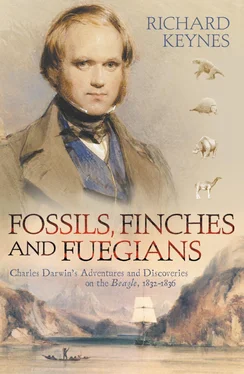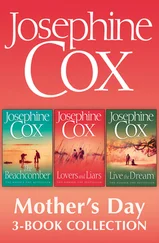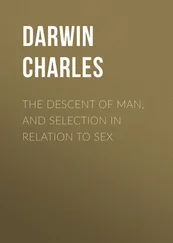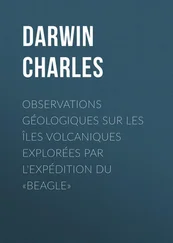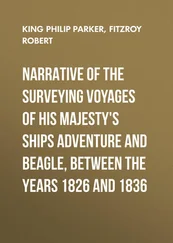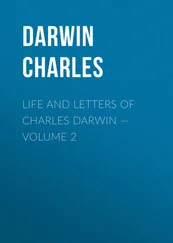1 ...8 9 10 12 13 14 ...22 On 11 September Charles embarked with FitzRoy on the three-day passage in a steam packet along the south coast to Plymouth, where his first view of the Beagle in the dockyard at Devonport was an unflattering one, ‘without her masts or bulkheads, & looking more like a wreck than a vessel commissioned to go round the world’. The trip gave FitzRoy an initial chance to evaluate Charles’s sea legs, and to indoctrinate him more fully in the Admiralty’s plans for the Beagle and what had been achieved during her previous voyage. The ship was disconcertingly small, ninety feet long and twenty-four-and-a-half feet wide amidships, with a displacement of 235 tons. Inside the poop cabin, measuring ten feet by eleven, and filled mainly by a large chart table and three chairs, Charles would work with Midshipman Philip Gidley King and the Assistant Surveyor John Lort Stokes (no relative of the Beagle ’s former Captain), and sleep in a hammock slung above the table. Stokes’s bed was in a cubicle outside the door, and King’s was on a lower deck. They would eat in the gunroom, but Charles would have the run of the Captain’s cabin on the deck below, where they would take their meals together. Sixty years later, King drew from memory for an edition of Charles’s Journal of Researches a picture of the internal layout of the ship.
Charles sped back to London by coach, ‘wonderful quick travelling, 250 miles in 24 hours’. Here he had a useful talk to Beaufort, who told him that the normal naval practice was for any collections made by the ship’s surgeon automatically to become the property of the government. But as Charles’s appointment was not an official one, he would be best advised to retain for himself the disposal of his collection amongst the different bodies in London. Which of those bodies would be the most suitable ones was an issue that greatly concerned him in subsequent correspondence with Henslow. But the first step was to spend a couple of days in Cambridge, making detailed arrangements for Henslow and a brother of his in London to receive, and keep safely in store until the return of the Beagle , consignments of specimens that in due course would be shipped from South America. Henslow’s parting gift to Charles was a copy of an English translation of the first two volumes of Humboldt’s Personal narrative of travels to the equinoctial regions of the new continent , inscribed ‘J.S. Henslow to his friend C. Darwin on his departure from England upon a voyage round the world. 21 Sept. 1831.’
Back at home in Shrewsbury for his last ten days, Charles packed up his clothes and books, and settled his complicated and sometimes overstrained financial affairs. He wrote to Henslow that his father was much more reconciled to the idea of the voyage now that he had become accustomed to it, and was in fact treating him with a generosity wholly belying the reputation he once had for being an extremely severe parent. Earlier in the summer ‘the Governor’ had handed over a £200 note, no less, to meet Charles’s debts at Cambridge. The cost of equipping him for the voyage amounted to some £600, not far from that of two years’ support at Cambridge, while the Admiralty was exacting £50 per annum for his board and lodging. Charles tried to console his father by saying that he would have to be ‘deuced clever to spend more than my allowance whilst on board the Beagle’ , to be answered with a smile, ‘But they all tell me you are very clever.’
On 2 October, Charles said goodbye to his father and sisters. But his best-loved neighbour Fanny Owen, ‘the prettiest, plumpest, Charming personage that Shropshire possesses’, to whom in their correspondence he was ‘Dr Postillion’ and she was ‘the Housemaid’, was away from home in Exeter, and could only write two long letters expressing her grief that she would not see him for two years or more, ‘when we must be grown old & steady’. Charles went to London, and thanks to further delays in the Beagle ’s readiness to sail imposed by the dockyard, remained there for three weeks. During this period he wrote to FitzRoy to apologise for the bulkiness of the luggage that he had dispatched to Devonport, and was assured that it was acceptable. In a second letter accompanying yet another parcel containing some talc, which Charles may have required for taxidermy, he enquired whether FitzRoy had a good set of mountain barometers, for ‘Several great guns in the Scientific World have told me some points in geology to ascertain, which entirely depend on their relative height.’ FitzRoy’s reply is not recorded, but Charles did obtain a set of aneroid barometers, of which he made extensive use during the voyage in his investigations of the rise and fall of the land on either side of the Andes. His copy of Jones’s companion to the mountain barometer & tables survives among his papers in the Cambridge University Library.
After a pleasant drive from London, Charles arrived in Devonport on 24 October, and next day found the Beagle ‘moored to the Active hulk & in a state of bustle & confusion’. The carpenters were busy fitting up the drawers in the poop cabin, and ‘My own private corner looks so small that I cannot help fearing that many of my things must be left behind.’ Later on he was wont to refer a little unfairly to the next two months as spent at ‘that horrid Plymouth’. From his letters to his sisters and the entries in the private journal that he kept from 24 October 1831 to 4 October 1836, it is evident that the principal defect of Plymouth in his eyes was its not infrequent storms and rain at the best of times, for ‘It does not require a rain gauge to show how much more rain falls in the Western than in the Central & Eastern parts of England.’ Even more aggravating had been the long series of south-westerly gales in December that forced the abandonment of several attempts to sail. Apart from this, however, Charles’s chief complaint was having had more social engagements than he wished, although they included dinners with the Commander-in-Chief Admiral Sir Manley Dixon at which everyone except for him was a naval officer and of course the conversation was almost exclusively nautical. However, he confessed that this made the evening very pleasant to him.
He dined with the ship’s nine gunroom officers for the first time on 29 October, and was regaled with horrific accounts of the manner in which he would be treated by Neptune on crossing the Equator. The following day he had lunch with the midshipmen, and after being taken for a sail to Millbrook, went for a long scrambling walk with Stokes and Charles Musters, a young Volunteer First Class hoping to become a midshipman. On other occasions he walked with various friends to Cawsand, Rame Head and Whitesand Bay, but his favourite walk, on which he took his brother Erasmus during a week’s farewell visit at the beginning of December, was to the park at Mount Edgcumbe, with what he described as its ‘birds eye view’ of Devonport, Stonehouse and Plymouth.
On 31 October Charles went with Stokes to the Plymouth Athenaeum, where space had been reserved to set up an ‘astronomical house’ for the Beagle in which observations were to be carried out with a dipping needle for the determination of the angular depression of the earth’s magnetic field. During the next weeks he had several sessions with FitzRoy at the needle, which he first described as a ‘very long & delicate operation’, though later he said less enthusiastically that he had been ‘unpleasantly employed in finding out the inaccuracies of Gambey’s new dipping needle’. At the Athenaeum one evening he attended a lecture by a Mr Harris on the virtues of the new system of lightning conductors with which the Beagle was fitted, and whose utility would be tested. He was taken out by FitzRoy to the breakwater protecting Plymouth Sound, where bearings were being taken to connect a particular stone, from which Captain King had based his longitudes for the previous voyage, with the quay at Clarence Baths where the true time was then taken. And he was assigned a regular task every morning of taking and comparing the differences in the Beagle ’s barometers. His education in navigation and meteorology therefore proceeded apace.
Читать дальше
